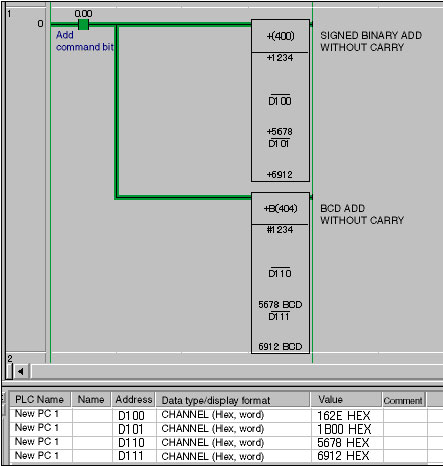

Normally Open relays do not allow current to pass unless it is energized. Relays can either be “Normally Open (NO)” or “Normally Closed (NC)”. Let’s look at how this is performed using Relays. If you have “0” as an input, performing the NOT operation will output a “1”. The NOT operation performs negation of input.


Note: For the examples that I will discuss below, the assumption is an output of 1 “Turns the circuit ON” and an output of 0 is a “Circuit OFF condition”. Whether you have relays or logic gates, these are the fundamental logical operations that you must know. Since the invention of transistors, manufacturers are now able to produce Integrated Circuits that readily perform these logical operations. The way they did this is by using the binary logical operations: NOT, AND, OR, XOR, NAND, NOR, and XNOR. Using the proper sequence and arrangement of the Relays, the early programmers were able to set conditions for switching their output devices. How is this important in PLC programming? Well, because as I have mentioned earlier, PLC programs were based on Relay Logic which operates on Binary Logic. 0, 1, 10, 11, 100, 101, 110, 111, 1000-you see the pattern? One digit is added to the mix every time you have “used up” all the possible representations. You use 20 if you have exceeded twice, and so on.īinary numbers are quite the same. In decimal, you use 10 if you have exceeded counting through all representations (0 to 9) once. The Decimal number system-which we are familiar with, has 10 (prefix Deci-) representations: 0, 1, 2, 3, up to 9.īecause you are an intelligent human being, you may have guessed that more digits can represent more values. Quarter(four)nary means four possible outputs. Confused? For a single digit, BI (two)-nary means two possible outputs.

What is Binary?īinary is part of the M-ary system of representation when M is the total number of results. Therefore, it is much simpler to use the Binary concept in Number Systems to represent the outputs. The result may also vary by the tiniest amount and it is already considered a different output. The “Maybe” in between the “Yes or No”, or the “Medium” in between “High or Low”. Instead of 0 or 1 only, we have values in between. In analog, we consider an INFINITE number of values. This simplifies input-output relationships as compared to the analog side of things. This means that it’s either “True or False”, “High or Low”, “Yes or No”, “0 or 1”. Logic circuits are digital, so they produce outputs that are discrete in nature. PLC Programming was based on Relay Logic, and Relay Logic was based on-well, the fundamentals of logic. The next step is actually designing a program for your controller to execute the steps required to perform your automated control system.īut first, you have to know some logical fundamentals that will allow your system to create decisions on its own.
I found this helpful video that actually shows a control problem to solve: Lastly, you would want to control an input valve to regulate the flow of water into your tank.
#Cx programmer ladder full#
In this case, because there are water levels involved, you must use level sensors: One for the Full level and one for the Near Empty level. What do you do?īecause you have clearly identified what outcomes you want along with the conditions, you now have to think the appropriate types of sensors and output devices that you must use. You want the tank to fill up until it is full and then automatically refill one the water level is near empty just to maintain the pressure. This means that the final outcomes must be determined clearly along with the conditions that determine the outcome.Īlso, the input and output devices must be clearly identified.įor instance, you want a control system for your water tank. 4.5 Equivalent Ladder Diagrams for Logical Functionsīefore you start programming your PLC, or in fact any controller, you must begin with the end in mind.3.4.2.1 Normally open and Normally Closed Inputs.3.4.1 Parts of a ladder logic diagram and how it works.3.1 What is a PLC programming language?.3 IEC61131-3 Standard: PLC programming languages.
#Cx programmer ladder how to#
2.2 How to convert Boolean Equation to Logic Gate (and vice versa).


 0 kommentar(er)
0 kommentar(er)
